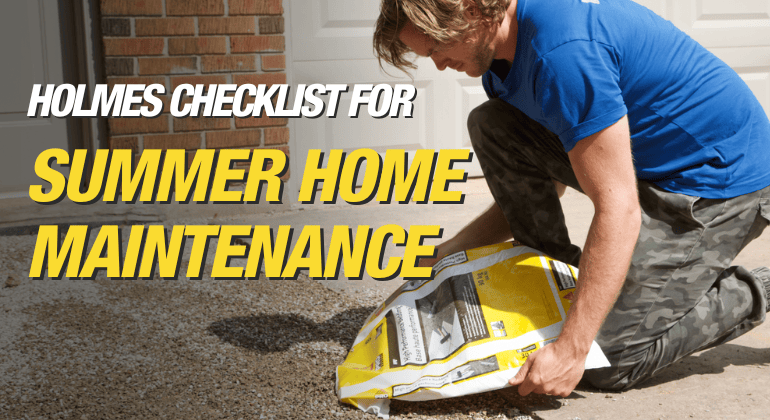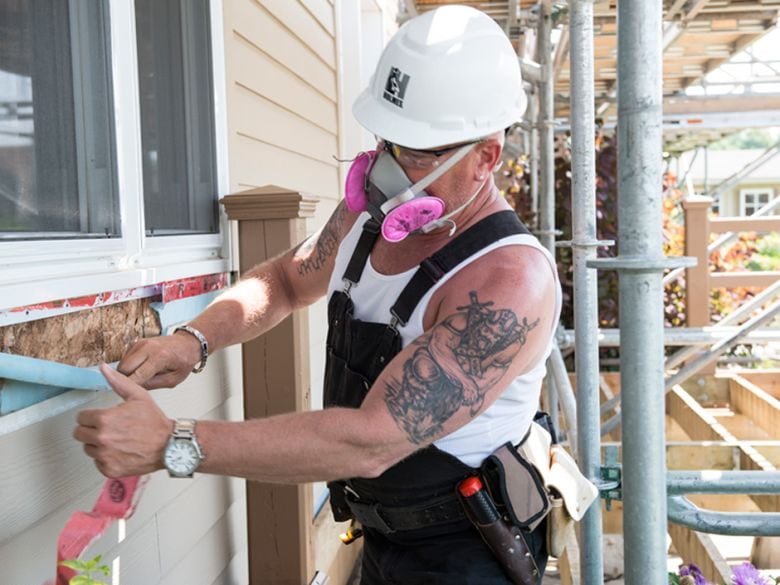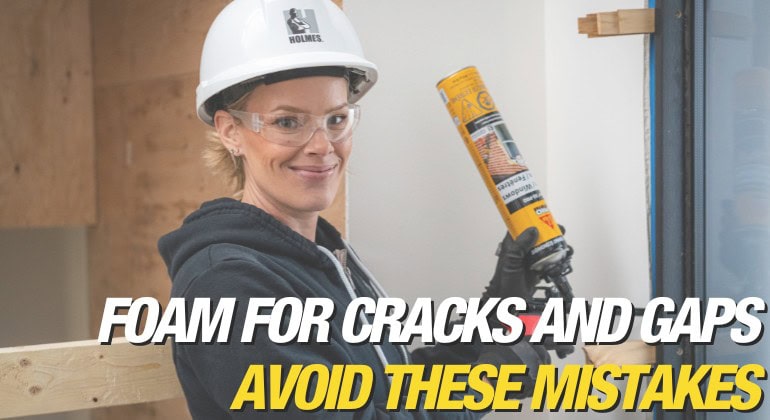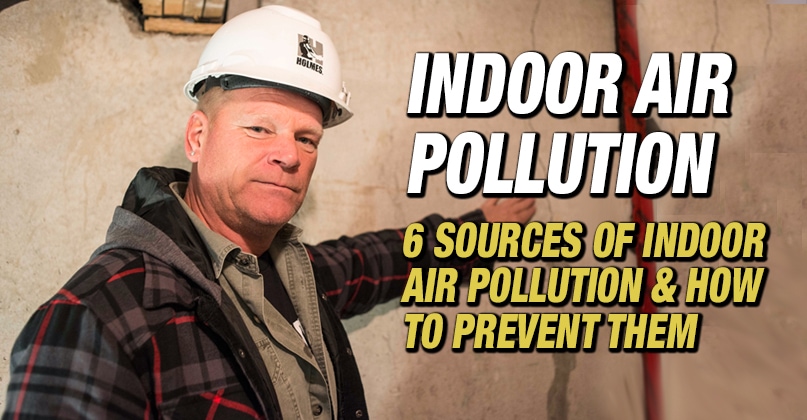Dream of a career where your skills bring joy, enable freedom, and create unforgettable memories? The thriving recreational vehicle (RV) industry offers just that! It’s more than fixing vehicles; it’s...

Summer Maintenance Tips for Your Home
By Mike Holmes
Mike’s Advice / Home Safety & Maintenance
Friday, March 15th, 2024 @ 2:41pm
Your Home Summer Maintenance Checklist
After a long, cold winter we always look forward to the longer, warmer days of summer. We get to shed our layers and enjoy the outdoors and our backyards but it also allows us to do those outside projects like refinishing the deck, building a fence or tackling an outdoor painting project. Here are a few summer house tasks that should be on your summer checklist for home maintenance:
#1 Replace Your Furnace Filters This Summer
Summertime means warmer weather. Our summers can be downright hot, and that means running your AC frequently. Make sure you get your furnace serviced regularly. It will help keep the air in your home healthy and clean and use HEPA filters to help reduce allergy symptoms too. Preventative maintenance in the summertime is important.
If you have an ERV or HRV, proper maintenance should also be conducted at the start of the summer season.
If you don’t have central air make sure your window air conditioner units are installed and working properly for the warmer months ahead.
#2 Use Ceiling Fans For Cooling
A great way to stay cool is the use of fans or ceiling fans. Fans don’t make the air any cooler but they will keep your family and pets cooler with the movement of air. In the warm summer months, ceiling fans should be running counterclockwise allowing the air to be pushed down. A ceiling fan, in conjunction, with your AC, can help keep your thermostat a little higher, by providing that extra circulation you need to make you feel cool.
RELATED:
#3 Stop Pests From Becoming Uninvited Houseguests This Summer
Summertime is when most insects make their way indoors looking for cooler places to make their homes. The longer summer days and shorter nights mean more hours of sunlight in a day giving many pests more time to feed.
Check the exterior of your home for these possible entry points for pests:
- Holes or cracks around window and door frames
- Holes in venting
- Tears in window and door screens
- Cracks in foundations, especially below windows and doorsteps. If the crack in your foundation is smaller than a dime, use an injection repair kit like SikaFix®

Love this Sika Foundation Crack Repair Kit. It comes with everything you need inside the box to get small cracks repaired.
Which insect is most prevalent in summer?
Common insects are houseflies and mosquitos, but also don’t forget bees and wasps. Watch out for insect wings. A cluster of wings around the exterior of your home could mean you have termites.
Termites have wings and drop them once they’ve found a good place to nest. Any gaps should be sealed with rubberized exterior caulking, like SIKA FLEX. Any larger gaps can be filled with low expanding polyurethane foam like SIKA BOOM AS or PRO and small cracks in the foundation can be filled with epoxy injection.
Torn window screens should be repaired or replaced. If you have any visible gaps in your mortar or loose bricks (also known as tuck-pointing) get them refilled and seek a professional, as this is a special skill that needs to be done properly.
#4 Conserve Water In The Summer
In the summer we tend to use more water for watering lawns, cleaning our decks, washing cars, etc. But all these things could use recycled rainwater or greywater and not clean drinking water.
Consider adding several rain barrels that collect the rainwater run-off from your roof and through your gutters. Rain barrels prevent water from entering storm drains, thus decreasing the risk of flooding, and helping prevent water from seeping into your foundation. It’s also ideal for watering your garden or lawn and washing your car.
RELATED:
Consider Greywater Systems
Recycled greywater systems use wastewater from showers, baths, basins, washing machines and dishwashers, not toilet water. Greywater systems are becoming more popular but still can be an expensive investment. Check with your local municipality about guidelines and restrictions.
#5 Check for Mold
That musty smell in your basement, crawlspace, or attic is the indication of moisture and/or mold. In fact, that smell is mold “digesting”. Finding the source of the moisture and fixing it is key, whether it is a crack in the foundation, a drain backup, a leaky roof, or leaky pipe.
Mold will continue to grow if the source (water) is not found and fixed. Read my article on humidity if you want to learn more about humidity inside your house.

If you find surface mold and it’s less than 10 sq. ft. you can clean it yourself using proper safety gear
Use safety gear such as eyewear, respirator, and gloves. Do not use bleach! You can also get a home inspector to test your home for mold.
RELATED:
#6 Repair Your Fence
Repairing your fence can be an easy DIY task. Sika Post Fix is a fast-setting polyurethane foam for fence posts, gate posts, mailbox posts, and even light posts – it mixes in 20 seconds and sets in 3 minutes, full strength in 2 hrs.
Using traditional concrete is still a good option but if you are short on time and doing a post- repair using Sika Post Fix will get you back to enjoying all those summer activities sooner than you think!
RELATED:
#7 Inspect Your Driveway
Our hard winters and extreme temperature fluctuations can wreak havoc on our driveways. For small holes and cracks on concrete driveways, you can fill cracks with a cement repair product.
For deeper cracks or sunken holes seek a professional as there may be a more serious problem that needs addressing.
Also, take the time to check out your patio space, and look out for missing or damaged bricks or stones. If your patio is concrete it might need sealing.
READ NEXT:







